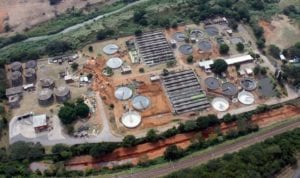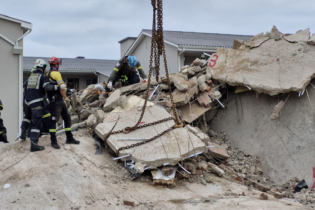Royal HaskoningDHV (formerly SSI Engineers and Environmental Consultants) recently completed a contract to optimise the hydraulic efficiency of the Amanzimtoti Waste Water Treatment Works.
The project was initiated in the wake of several large new commercial developments in the catchment area. In addition to accommodating the increased flow, a major benefit is a significant improvement of the quality of the effluent discharged into the EZimbokodweni River, particularly during peak wet weather conditions. Modifications to the plant presented an opportunity to include a pilot project to determine the viability of enhanced methane generation based on the co-digestion of high strength toxic waste with sewage sludge. This involved the replacement and upgrading of various electrical panels and control equipment and for the construction of the necessary plant and equipment to accommodate the pilot project. The pilot study is a collaborative venture undertaken by the municipality and the Pollution Research Group from the Chemical Engineering Department of the University of KwaZulu-Natal with funding from the Water Research Commission. Royal HaskoningDHV’s Gordon Druce, who managed the design, tender and construction stages of the project, explained that the existing plant was not operating at its hydraulic capacity primarily due to design limitations and the configuration of various sections of the plant, which restricted the overall process capability of the plant. “The improvements that were implemented enhanced the hydraulic efficiency through the works with improved flow division and settling capacity. Similarly, the activated sludge treatment process has been enhanced through the elimination of short-circuiting and the improvement in the uniform distribution of flow into the parallel lanes of the aeration tanks” explains Druce.The project involved the construction of an additional inlet channel at the head of works, extensions to various flow division structures, new inlet launders to the existing aeration tanks and the augmentation and upgrading of some existing pipework and new interconnecting pipework on both the east and west plants. In addition, new structures on the east plant include a primary settlement tank, a mixed liquor flow division chamber and two secondary clarifiers.
Construction work took place within the confines of an operating treatment works, presenting Royal HaskoningDHV and the contractor, Icon construction, with the complexities of having to design and construct new structures and interconnecting pipework in and around existing infrastructure and services, whilst minimising the impact on the routine operation of the works. Pre-planned short duration shut downs of various components took place to facilitate tie-ins and connections. “The contractor had to plan and execute cut-ins into the existing system and ensure that spillages were avoided or limited to amounts that are manageable through temporary containment on site, thus preventing any possible environmental infringements,” says Druce.“Also challenging was the fact that, with new construction work required in and around existing services, many old and relatively fragile asbestos cement pipes needed to be exposed by hand to prove their positions and levels and, in many instances, supported and protected during excavation. “From the geotechnical investigation, the inferred geology comprised an interlayered sequence of sand and very soft clays below the founding depths of the new primary settlement tank and the two new secondary clarifiers. This interlayered sequence of sand pinched out across the site resulting in the clay layer varying significantly in thickness. The thicker clay would consolidate more than the thinner layers, which could lead to tilting of the structures on shallow foundations, and piling systems using continuous flight auger compression piles were installed. Any uplift through groundwater pressure under the new tank structures was accommodated through the use of groundwater pressure relief valves”









